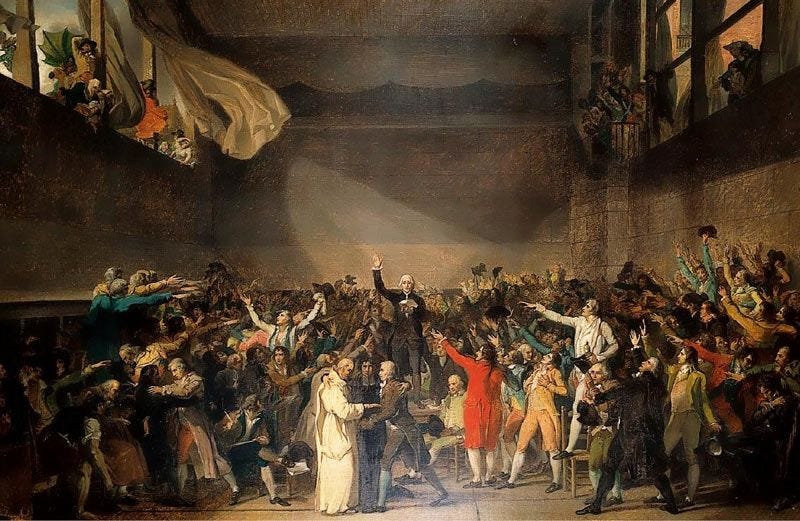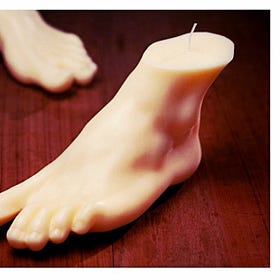I had initially planned to write a functional post about layered lighting. But it's equally important to understand it from an artistic perspective because the functional approach is killing my soul, and perhaps yours too.
Layered lighting has become a ubiquitous trend. It is a technique that involves combining various light sources to create a multifaceted ambiance (see Repository). However, it is often reduced to a functional process, which leads to sterile and uninspiring results.
In almost all artistic disciplines, lighting plays an instrumental role in creating a desired ambiance, highlighting specific elements, and evoking certain moods and emotions. Similar to a painting or film that evokes specific feelings, lighting can also be employed to shape a room's atmosphere. But, most of us do not draw inspiration from these sources; instead, we follow what we see online or in print without considering the effect or what truly matters to us.
Despite having a background in the visual arts, I, too, have followed architectural plans without much thought. However, there are many varied examples in the arts that offer us insight into how to use light.
Below are three paintings where light plays an instrumental role:
Left: The warm glow of the candle creates a sense of intimacy and concentration.
Middle: The soft and diffused light generates a serene and contemplative scene.
Right: The contrasting areas of light and shadow enhance depth and add mystery.



Goya employs chiaroscuro to create a sense of depth, intensity, and emotion, contrasting the painting's dark background with the luminous central figure. The use of light and shadow intensifies the drama and draws the viewer into the scene.
Similar principles are employed in Wong Kar-wai's 'In the Mood for Love,' where lighting is integral to the film's aesthetic. The warm, saturated colors, shadows, and silhouettes evoke a dreamlike atmosphere. The diffused lighting enhances the romantic tension, while contrast is used to focus the viewer's attention.
The concepts that guide artistic disciplines such as color theory, composition, contrast etc. are used in lighting design, as well.
Composition
Similar to how a photographer or cinematographer composes a shot, architects and designers use lighting to enhance the overall visual composition by using light to frame architectural elements, create focal points, and guide the viewer with intention and purpose.
Below: The careful positioning of windows, the consideration of specific views, and harmonized interior and exterior lighting, create a cohesive and aesthetically pleasing frame.


In the Canyon House, the framing of daylight highlights architectural elements, while artificial lighting enhances the effect by spotlighting areas and creating focal points.
Atmosphere
Different color temperatures and lighting techniques can evoke different emotions and moods. For example, warm and soft lighting can create an intimate ambiance, while bright and cool lighting can generate a sense of energy and vibrancy.
Below Left: In Maison Guiette, the windows and open floor plan allow natural light to flood the interior, creating a breezy openness and spatial continuity.
Middle: In Vermeer's 'Girl Reading a Letter at an Open Window,' the soft, diffused light from the open window envelops the young woman, enhancing the contemplative mood.
Right: The dimly lit interior, coupled with the stark contrast, adds to the atmosphere of solitude and introspection, highlighting a stark melancholy.



Louis Kahn was remarkable for his ability to use natural light to infuse spaces with an ethereal quality.



Narrative
Film and theater excel at using lighting to tell stories and create immersive experiences. Light combined with architecture can evoke a particular mood or engage visitors in a visual narrative.
The use of red instills a feeling of danger, while the limited light intensifies the sense of isolation and claustrophobia. The alignment and faint light on the twins within the long, straight corridor create an unsettling sense of order and symmetry.
Below left: The intense and vibrant complementary colors gives rise to a dynamic and emotionally charged atmosphere.
Middle: The soft glow that complements the pastel hues creates a charming, nostalgic quality reminiscent of the ‘80 era.
Right: Soft, diffused daylight filters through tall windows, casting gentle shadows. It accentuates the room's delicate details and textures, enveloping them in an ethereal glow.



Illumination
The combination of natural light, with its ever-changing qualities, and artificial light, which offers more precise control, can create more interesting and enhanced visual experiences.
Le Corbusier's Villa Savoye is a masterful example where natural light abounds, and artificial lighting is used as a complementary element.

Alvar Aalto's house uses multiple lamps to create focus and different ambiances.
Both the Eames House and the Aalto residence combine natural, ambient, task, and accent lighting to create a balanced and versatile illumination that enhances the use of the various spaces.

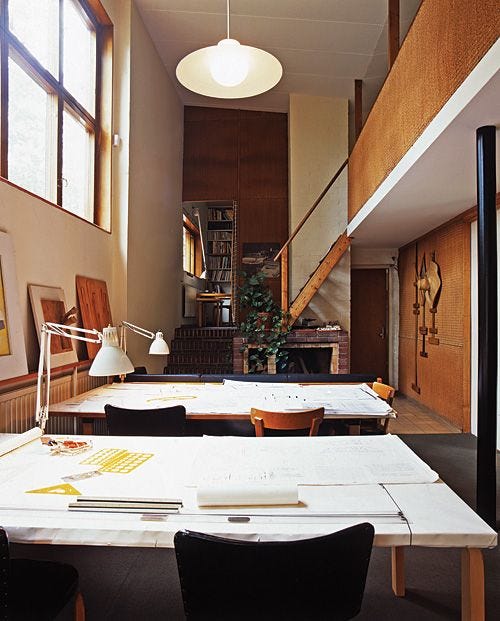
Contrast
Contrast and shadows are fundamental techniques that can create depth, drama, and intrigue, and are used to highlight details, emphasize textures, and generate a sense of mystery or intimacy. The juxtaposition of light and shadow can change the mood and intensify the emotional impact.
The skillful use of lighting creates an arresting scene with a singular focus.
Below left: The placement and design of openings, allows light to filter in dynamically.
Right: Varying orientations and contrast create a mesmerizing composition.

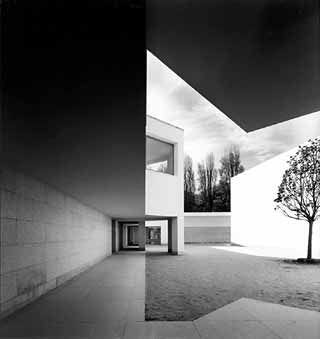
Emphasis
Light can be used in interiors to draw emphasis on specific elements through techniques such as spotlighting, contrasting light levels, and strategic placement. Through the use of focal points, light can enhance the visual hierarchy to add depth and drama.
Golden hues are used for focus, showcasing the protagonist's unwavering spirit and determination in the face of adversity.
Below left: Key moments and emotions are emphasized through soft and warm lighting.
Right: Curves and interconnected spaces, create scenes of light and shadow that change with the sun. Unusual fixtures draw attention to specific areas contributing to the overall highlighting effect.
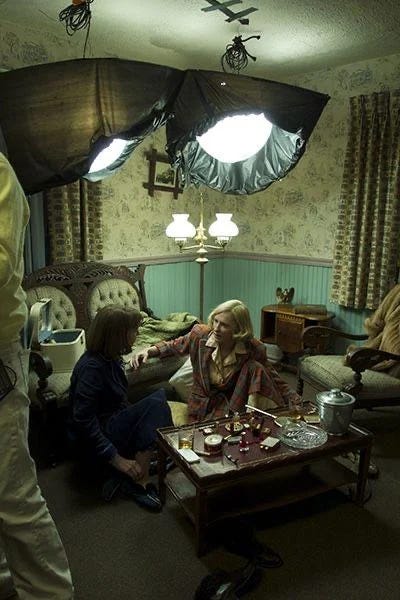

Color
Light can reveal and influence the perception of colors, while colors can evoke emotions and affect the way we interpret light in various settings. Understanding the psychological effects of colors and their interactions can help define a space for its intended activities.
Colors and lighting combine to evoke a dreamlike and mysterious atmosphere, a concept also applied in the apartment on the right, resulting in an intriguing space.


Below left: The Mirman House is known for how light is used to seamlessly connect the indoors with the outdoors, while its color palette further enhances it.
Middle: Colors and light combine to create a vibrant, harmonious, and enchanting scene.
Right: Patterns and light reflections, using carefully selected textiles, wallpapers, and mirrors, make for a sophisticated, luxurious space.



Dynamism
Artists use techniques such as bold lines, diagonal compositions, and distorted figures to create a sense of vitality. Similarly, in architecture, sweeping lines, asymmetrical compositions, and unique forms can imply movement or fluidity.
Natural and artificial light, accompanied by shadows, generates dynamic movement. A similar approach is used in the Cité Métro below right.
Below left: The ceiling's design, color, and reflective properties bounce and distribute light, infusing the environment with a dynamic, open, and spacious feel.
Right: Carefully crafted lighting accentuates the station's architectural elements, highlighting the intricate details of pillars, arches, and vaulted ceilings. Warm, soft glows illuminate the station, while reflections exude a vibrant energy.


As you consider how to design your space, take into account your specific requirements, the intended function of the area, and the overall design vision. Collaborating with a designer or architect can provide insights and expertise or have fun with it yourself.
If you like this post, please heart, subscribe or share. I would really appreciate the support. If you’d like to share anything please email me, I am always happy to hear from you. Thank you.
Related content:
How Much Light Do You Need?
(Paid post) I wrote this article after I struggled through the process of figuring out out how much light I needed for certain rooms. A common question that people ask is: How does one determine the precise amount of light required for a room or specific activities? Relying solely on conjecture can result in either excessive brightness or, worse, a dimly lit space.
Vintage Lamp Ordeal, Part 1: The "Conopi"
(Free) This post is first in a series about my challenges with lamps and how to resolve them.
Vintage Lamp Ordeal, Part 2: The Entryway
(Paid post) This post is second in a series about my challenges with lamps and how to resolve them. When we bought our house, there was a stained glass lamp in the entryway. Stained glass was a popular style...
Queen’s Repository
Reading
Eames Foundation (site)
OEN: A Trip To Helsinki, Finland – Inside Finnish Designer Alvar Aalto’s Home (site)
Houses Architects Live In (book)
Layered lighting
This is a design concept that employs various light sources, intensities, color temperatures, and angles to create depth, texture, and ambiance in a room. It involves three main layers:

Ambient Lighting: This foundational layer ensures even illumination throughout the space, achieved through overhead fixtures like chandeliers or recessed lights.
Task Lighting: Task lighting provides focused illumination for specific activities or areas. Examples include desk lamps or under-cabinet lights.
Accent Lighting: Accent lighting highlights architectural features, artwork, or decor, creating focal points and elevating the room's aesthetics. Wall sconces and track lights are common examples.
By replicating the natural interplay of light found in nature, light layering creates a warm and inviting atmosphere, surpassing the starkness of single overhead lights.
Art Principles
Principles of art are the foundation upon which to develop any art form.
Composition: Arrangement of visual elements.
Contrast: Difference between elements such as light and dark, large and small etc.
Color: Hue is the actual color, saturation is the intensity or purity and brightness is the lightness or darkness.
Emphasis: Drawing attention to a specific area or element.
Atmosphere: The feeling or mood that is conveyed.
Narrative: Visual elements, symbolism, and composition used to convey a story.
Dynamism: A sense or suggestion of movement, energy, or action.





